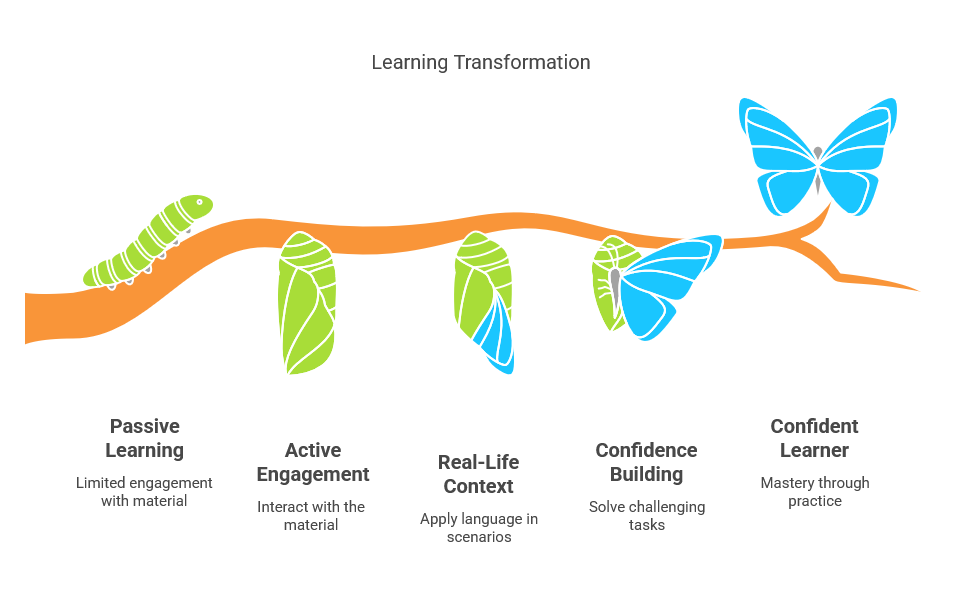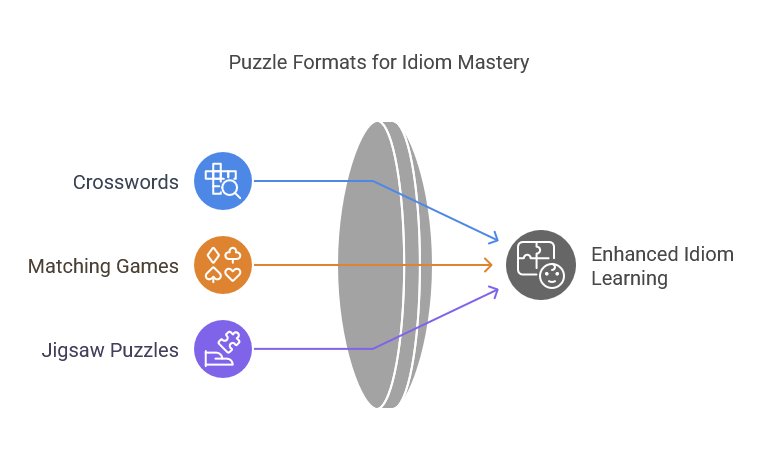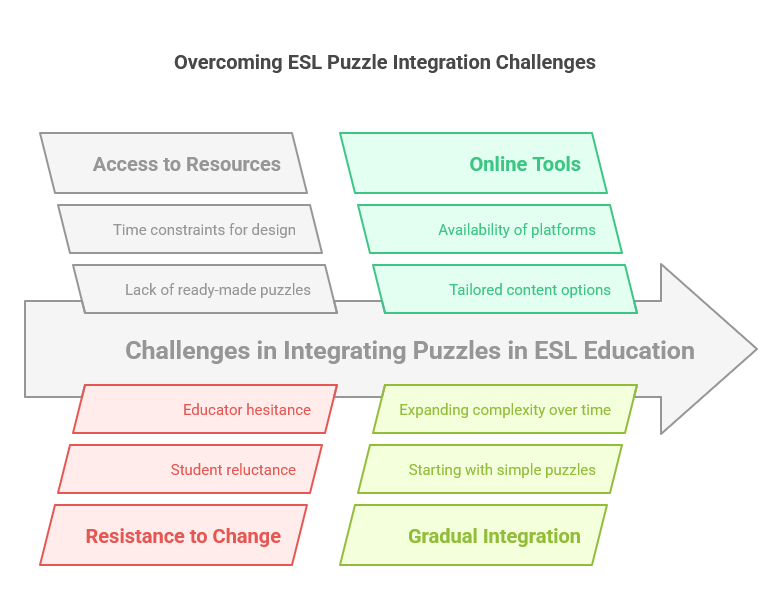Cultural Literacy Through Puzzles: A New Approach to Teaching Idioms and Context in ESL
Introduction
Language learning is more than grammar and vocabulary; it’s about understanding the cultural nuances that breathe life into a language. For ESL (English as a Second Language) learners, mastering idioms and cultural context is one of the most challenging tasks. Traditional teaching methods often focus on rote memorization, leaving students disconnected from the cultural richness behind language.
What if there were a way to teach idioms and cultural context that was fun, interactive, and effective? Enter puzzles—innovative tools that bridge the gap between language and culture, transforming learning into an engaging experience.
This article explores how puzzles can revolutionize ESL education by making idiomatic expressions and cultural nuances accessible and enjoyable for learners.
Understanding Cultural Literacy in ESL
Cultural literacy forms the backbone of effective communication. In the ESL context, it means navigating the norms, values, and expressions that define a language.
Why Cultural Literacy Matters
Cultural literacy enables learners to:
- Understand Context: Idioms and phrases often rely on cultural references, such as “raining cats and dogs,” which are meaningless without context.
- Build Relationships: Comprehending cultural nuances fosters deeper connections and better communication.
- Avoid Missteps: Misinterpreting or misusing idioms can lead to awkward interactions or misunderstandings.
The Challenge of Teaching Idioms
Teaching idioms in an ESL setting is complex because:
- Definitions Aren’t Enough: Memorizing meanings without context rarely leads to meaningful understanding.
- Lack of Engagement: Idioms presented in isolation often feel dull and unrelatable.
- Cultural Disconnect: Learners struggle with idioms tied to unfamiliar customs or values.
The Role of Puzzles in Education
Puzzles are more than fun diversions; they are effective educational tools that enhance engagement, problem-solving, and retention.
Cognitive Benefits of Puzzles
Puzzles can:
- Strengthen memory and logical reasoning.
- Improve spatial awareness and critical thinking.
- Reduce learning anxiety by presenting challenges in a relaxed, game-like environment.
Why Puzzles Work in Language Education
Puzzles create an interactive learning experience where students:
- Engage actively with the material.
- Contextualize language in real-life scenarios.
- Build confidence by solving incrementally challenging tasks.

Puzzles as a Tool for Teaching Idioms
Puzzles are uniquely equipped to make idioms relatable and engaging by embedding them in problem-solving activities.
Why Puzzles Enhance Idiom Learning
- Engagement: The game-like nature of puzzles motivates learners to explore idioms.
- Contextual Learning: Puzzles allow idioms to be practiced in scenarios that mirror real-world usage.
- Improved Retention: Associating idioms with activities boosts long-term recall.
Effective Puzzle Types for Idioms
Here are puzzle formats ideal for teaching idioms:
- Crosswords: Solve clues tied to idiomatic expressions, reinforcing definitions and usage.
- Matching Games: Pair idioms with their meanings or cultural origins, promoting deeper understanding.
- Jigsaw Puzzles: Use visuals to connect idioms to cultural themes or common expressions.

Strategies for Classroom Integration
To maximize impact:
- Start Small: Introduce puzzles as warm-ups or supplementary activities.
- Theme It: Align puzzles with seasonal or cultural topics to enhance relatability.
- Combine with Practice: Use puzzles as a precursor to conversational activities, like role-playing.
Enhancing Cultural Context with Puzzles
Puzzles do more than teach idioms—they bring culture to life.
How Puzzles Reflect Culture
Puzzles can:
- Depict traditions and values through themed visuals or scenarios.
- Highlight cultural behaviors, like etiquette or customs, in idiomatic expressions.
- Provide relatable contexts that resonate with learners’ own experiences.
Activities for Cultural Learning
Here are practical ways to integrate cultural literacy:
- Role-Playing Puzzles: Combine crossword puzzles with skits where idioms are used.
- Narrative Challenges: Create story-driven puzzles where idioms drive the plot.
- Group Work: Use collaborative puzzles to encourage discussions about cultural nuances.
The Benefits of Cultural-Themed Puzzles
By using culturally enriched puzzles, educators can:
- Encourage empathy and cross-cultural understanding.
- Simplify abstract cultural ideas into relatable lessons.
- Boost confidence in navigating cultural contexts.
Case Studies and Examples
Imagine how puzzles might be applied in real-world ESL settings:
- A classroom could use crosswords about idioms tied to travel, sparking discussions about cultural differences in travel habits.
- Language schools might incorporate image-based jigsaw puzzles for idioms like “spill the beans” or “hit the nail on the head,” helping learners build confidence in their understanding.
These scenarios demonstrate the potential of puzzles to create meaningful and engaging learning experiences.
Addressing Challenges
Despite their advantages, integrating puzzles in ESL education isn’t without obstacles.
Common Issues
- Access to Resources: Teachers may lack ready-made puzzles or time to design them.
- Resistance to Change: Students and educators accustomed to traditional methods may be hesitant to adopt puzzles.
Solutions
- Online Tools: Use platforms like ESL Games Plus for pre-made puzzles tailored to idioms and cultural topics.
- Customize Content: Tailor puzzles to your learners’ cultural backgrounds or language goals.
- Gradual Integration: Start with small, simple puzzles and expand as students grow comfortable.

Conclusion
Puzzles are more than games; they are educational bridges connecting language and culture. By incorporating puzzles into ESL lessons, educators can make idioms and cultural literacy engaging, memorable, and impactful.
Whether you’re an educator looking for creative tools or a learner seeking interactive resources, puzzles are a game-changer. Explore puzzle-based learning and see how it transforms language learning into a meaningful, enjoyable journey.
Call to Action
Unlock the full potential of puzzles in your ESL classroom with Puzzle Maker Pro. Create thematic, engaging puzzles that bring language and culture together. Try it today and inspire your learners with the power of puzzles!
References
- 5minuteenglish.com – The Importance of Cultural Awareness in ESL Learning
- internationalscholarsjournals.org – Promoting cultural literacy in the EFL classroom
- thetutorresource.com – Teaching Idioms for ESL Students: A Comprehensive Guide
- tesolau.com – The Role of Culture in Teaching English to Speakers of Other Languages
- myenglishpages.com – Effective Techniques For Teaching Idioms
- alulaenglish.com – Cultural Awareness in ESL Classrooms for English Teachers
- linkedin.com – The importance of cultural literacy in language teaching
- westernsydney.edu.au – What is cultural literacy?
- pubs.sciepub.com – Designing Idiom and Proverb Crossword Puzzles for Primary School
- studysmarter.co.uk – Cultural Literacy: Definition & Importance
- eflcafe.net – How to Teach English Idioms Effectively
- jmrels.journals.ikiu.ac.ir – L2 Idioms Learning through Cooperative Teaching Techniques
- teacherspayteachers.com – Culture crossword puzzle
- eslgamesplus.com – Games for Learning English, Vocabulary, Grammar Games




